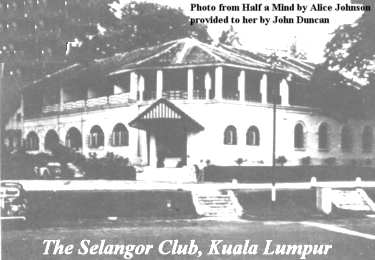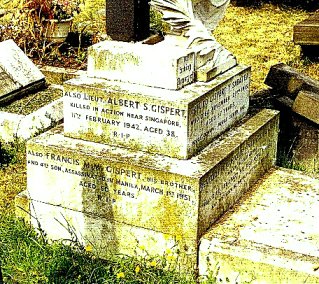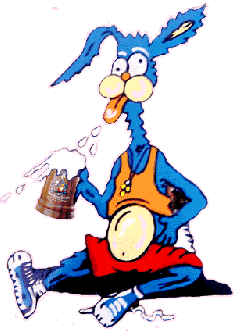Hash House Harrier History

The Hash House Harriers received its humble beginnings in 1938 from a Britisher named Albert Stephen Ignatius Gispert, in what is now Malaysia. Having a fondness for the "paper chase," he gathered together several expatriates to form a group in Kuala Lumpur that would later become a worldwide legacy. The fraternity received its name from the Selangor Club Chambers, which due to its lackluster food was commonly referred to as the ‘Hash House.' There are currently almost 1500 hashes, including groups in almost every major city in the world, listed in the World Hash House Harriers Database maintained by Global Trash, the world hash publisher. Keep in mind when reading the history of hare and hounds, what separates the Hash House Harriers from other harriers groups is as much emphasis on the social camaraderie and non-competitive aspects of the group's activities as on the sport of hare and hounds itself. Whereas membership in other harrier groups can be traced by its founding members prior to 1938, it is generally accepted that the sport of Hash House Harriers, in contrast to other hare and hounds groups, was defined by this particular club and all other groups of the Hash House Harriers can trace their lineage (directly or in concept) back to the Selangor Club Chambers or the Hash House in 1938.

Who is "G"?
Alberto Esteban Ignacio Gispert, hash name "G", (his surname is pronounced with a Ja as in juice), was born on the 31st July 1903 to Arthuro and Remedeos Gispert y de Puiguriguer. He was born at 80 Breakspear Road, Brockley, Kent (actually on the corner of Harefield Road!) which is now part of the London Borough of Lewisham but previously the Metropolitan Borough of Deptford. The family were Catalan Spanish and maintained the house in Breakspear Road and at least one other in Barcelona. They moved to Brockley sometime in late 1891 or 1892. Alberto was the youngest of seven children, the third to be born in the UK.
The young Alberto, although described in later life by Cecil Lee (one of the other original members of the first hash) as the 'perfect English Gentleman' was brought up in a household that spoke little English. His mother, Remedeos, spoke no English at all so the household language was Spanish. Alberto was sent to the local Roman Catholic school, St Joseph's Academy in Blackheath. Here, Alberto learnt the basics of non-competitive running following paper trails, which was a common sport in English schools at that time. This may be where the idea of hashing was first formulated to reappear many years later in Malaya, as it was then called.
Following his schooling, Gispert joined H S Baker & Co and became a Chartered Accountant in 1928 and applied for an overseas posting with Evatt & Co (later to become Price Waterhouse) who sent him to Kuala Lumpur. He married Eve in 1937, and his son, Simon, was born in the same year.
Along with "Torch" Bennett, Cecil Lee and a few others, "G" founded the Hash House Harriers at the Selangor Club in late 1938, the name being taken from the local nickname for the Selangor Club.

Also in 1938 he had joined the part-time militia, the Federated Malay
States Volunteer Reservists, reaching the rank of Captain. He was on leave
in Australia when the Japanese invaded in December 1941. Although his wife
and son had safely returned to England by then, "G" rushed back to Malaya
and was seconded to the Argyll & Sutherland Highlanders regiment as
a Second Lieutenant. He was killed in action in the Battle of Singapore
on 11th February, 1942. The family memorial shown here is in Brockley Cemetery,
South London. Take a beer for him if you visit.
Hares and Hounds . . .
Hares and Hounds-style chases have been around for centuries in one form or another. Of course, the original concept was to mimic the hunting sport during times or in locations where sporting game was sparse or children mimicking the hunt as practiced by adults. Some "gentlemen" substituted men for the game in an effort to add something different to the sport. There are stories of this in colonial America as well as in England.
It was a normal transition, then, to also substitute the hounds as well with runners. Men, not as well endowed with the sense of smell, required a trail of paper to their quarry. This sport was well entrenched long before these sportsmen became known as 'hashers'. The sport was referred to as Hares and Hounds or the Paper Chase. It is pretty much a tossup whether children, immolating the hunts of the adults, or adults looking to make a new running sport, developed the sport of hares and hounds first. There is evidence chronicled in the nineteenth century of the hares and hounds being a popular sport in English boarding or public schools.
One such story was listed in the On On Run #2 published by Tim Magic Hughes of Harrier International. It was taken from Tom Brown's School Days by Thomas Hughes published in 1857. It depicted a meet by the Big-Side Hare and Hounds. Students busily tore up old newspapers, copybooks and magazines into small pieces to fill four large canvas bags with the paper scent. Forty or fifty boys gathered for the run, and two good runners were chosen as hares who donned the bags and started across the fields laying trail. There would be a turnaround point at a church to discourage shortcutting, as the finish was known.
The object, explained at the start, was to make the turnaround and finish
at the pub within fifteen minutes of the hares. The hares were given a
six-minute head start, then the pack was off. When scent was located, the
member of the pack calls "Forward!" instead of the currently traditional "On On!",
otherwise the description of the trail is a typical cross-country fare
familiar to all harriers – meadow, hedgerow, fence crossings, plowed fields,
thorns, brooks, shiggy and hills. Members of the pack worked together finding
scent and straining to keep up with the FRBs (Front Running Bastards),
as we call them today. The disappointment of the DFLs (Dead Fucking Lasts),
again a term of today, was depicted as they contemplate short-cutting to the finish and
being among the first historical SCBs (Short Cutting Bastards).
 © 2018, th3.org
© 2018, th3.org